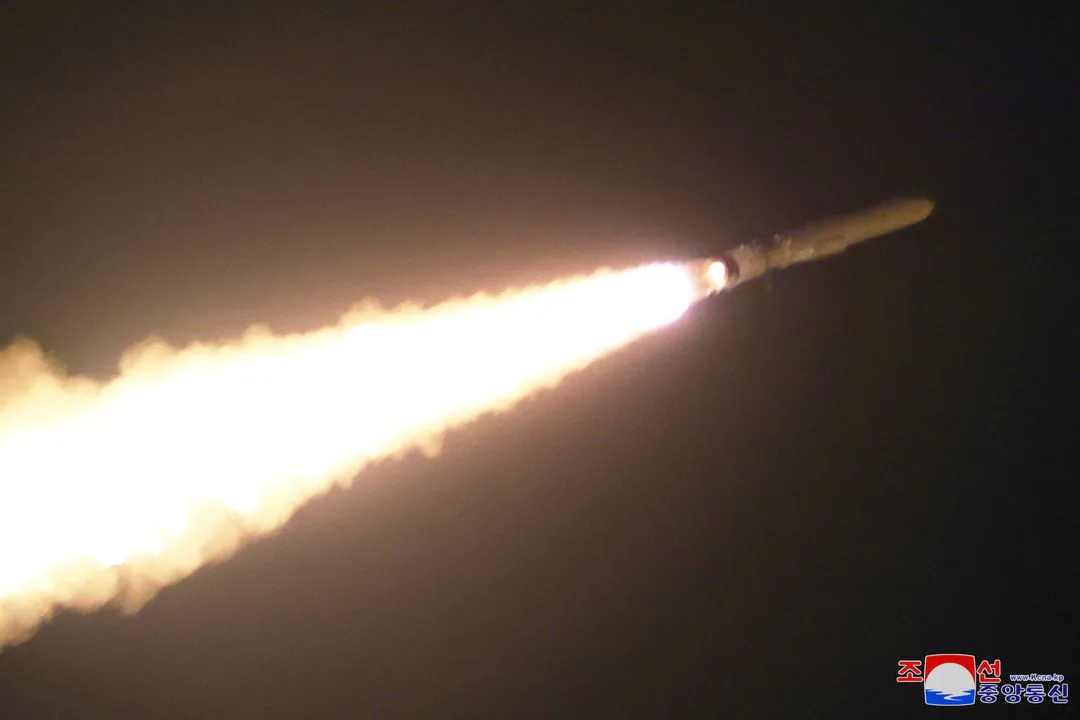
North Korea conducted test firings of a new cruise missile on Wednesday, according to a state-run media report. Meanwhile, the Chinese military has denounced Wednesday’s Taiwan Strait transit by USS John Finn (DDG-113), and the Royal Australian Navy (RAN) has dispatched a frigate for the service’s first regional presence deployment of the year.
State-run Korean Central News Agency on Thursday reported that the North Korea’s Missile Administration conducted the first test-fire of the under-development cruise missile Pulhwasal-3-31 on Wednesday. “The test-fire had no impact on the security of neighboring countries and has nothing to do with the regional situation,” said the report, which also explained the test firing was a part of process of constant updating of the weapon system and a regular and obligatory activity of the administration and its affiliated defense science institutes.
The report made no mention of how many missiles were fired or where they were fired, but, on Wednesday, South Korea’s Joint Chiefs of Staff (JCS) stated that at 7 a.m. that day, North Korea fired several cruise missiles towards the Yellow Sea and that the details were being analyzed by U.S. and South Korean intelligence agencies.
South Korean defense minister Shin Won-Sik condemned the launches, stating North Korea was seriously threatening South Korea with “claiming an ‘underwater nuclear weapons system test‘ and launching cruise missiles today.” Shin made the remarks while visiting the Republic of Korea Air Force (ROKAF) 17th Fighter Wing based at ROKAF Cheongju Air Base, which operates South Korea’s total complement of 40 F-35A Lightning II fighters. He told the unit they would be the ones to put an end to the North Korea regime if North Korea started a war. “If the Kim Jong-un regime opts for the worst choice of waging war, you will be the vanguard of removing the enemy’s leadership in the shortest time and herald the end of the regime,” said the South Korean defense chief.
The various UN resolutions on North Korea do not ban cruise missiles; they only cover ballistic missiles. However, the cruise missile’s ability to mount nuclear warheads along with conventional warheads pose a nuclear weapon threat to South Korea and U.S. forces operating there.
On Wednesday, China’s Eastern Theater Command issued a statement that denounced Wednesday’s Taiwan Strait passage by USS John Finn. “The troops of the Chinese PLA Eastern Theater Command tracked and monitored the US warship’s transit in the whole course and handled it according to law and regulations,” said the command’s spokesperson, Snr. Col Shi Yi, in the statement. Shi also said that recently, the U.S. military has frequently carried out provocative acts to maliciously undermine regional peace and stability. “The troops in the theater are on high alert at all times and resolutely defend national sovereignty,” concluded the statement.

Meanwhile, the People’s Liberation Army Navy (PLAN) is conducting its own transit of an international water strait. On Thursday, Japan’s Joint Staff Office (JSO) issue a release stating that at 3 a.m. that day, PLAN destroyer CNS Zhengzhou (151) and frigate CNS Changzhou (549) had been sighted sailing north in an area 43 miles west of Tanegashima Island, and subsequently sailed west to transit the Osumi Strait and the East China Sea. The release also noted PLAN ships transited the Miyako Strait on Jan. 16 to enter the Pacific. A Japan Maritime Self-Defense Force P-1 maritime patrol aircraft (MPA) from Fleet Air Wing 1, based at JMSDF Kanoya Air Base on the main island of Kyushu, shadowed the PLAN ships. The PLAN routinely transits the international waters of Japanese straits, with JMSDF ships and aircraft routinely tasked to shadow their voyage.

The RAN, meanwhile, has kicked off its annual regional presence deployments with the departure of frigate HMAS Warramunga (FFH152) on Tuesday from its homeport of Sydney for a three month deployment to South Asia and Southeast Asia. “The ship’s embarked MH-60R Seahawk helicopter and the 200-strong ship’s company will participate in a range of exercises, cooperative activities and joint patrols with partner navies,” said a Thursday Department of Defence release.
“Indo-Pacific deployments demonstrate the Australian Defence Force’s ability to maintain a near continuous presence in the region to support regional security and stability,” said Commander Australian Fleet, Rear Adm. Chris Smith, in the release. The deployment will conclude in mid-April.
Earlier on Tuesday, the Department of Defence announced that Australia and Japan had signed an agreement to enhance strategic capabilities in robotic and autonomous systems for undersea warfare. The research project between Defence Science and Technology Group and Japan’s Acquisition, Technology and Logistics Agency (ATLA) is the first under a bilateral research, development, test and evaluation arrangement signed in June 2023, stated a release. The inaugural research project will contribute to strategic capabilities in undersea communication and interoperability between Australia and Japan.
ATLA provided details on the collaboration in its own release on the same day, stating various simulation scenarios would be conducted using underwater acoustic communication models and marine environment information from both Australia and Japan.





